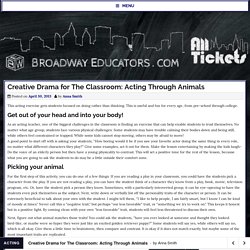

A Humane World. The tiger, who was found in an abandoned Houston home, is shown here getting ready for transport to the Cleveland Amory Black Beauty Ranch.

Private ownership of captive tigers is a major problem in the United States. We hope this incident spurs both state and national legislators to act to more closely regulate private ownership of dangerous exotics. Photo by the HSUS When it comes to the private ownership of captive tigers in the United States, you just can’t make this stuff up. Through the years, we’ve seen reports of tigers kept in apartments, tigers in garages, tigers in gas stations, tigers in tattoo parlors, tigers in junkyards and more. The stunned person called a 311 dispatcher who was initially skeptical at the thought of a tiger in a house but then sent police and animal control authorities to the scene. Two days later, thanks to officers from BARC—the City of Houston’s animal shelter—the tiger was safe at our Cleveland Amory Black Beauty Ranch.
Killing of animals. The slaughtered swine (1652) by Barent Fabricius; a depiction of a killed animal The killing of animals is animal euthanasia (for pain relief), animal sacrifice (for a deity), animal slaughter (for food), hunting (for food, for sport, for fur and other animal products, etc.), blood sports, or roadkill (by accident).

Animal euthanasia[edit] Animal euthanasia (euthanasia from Greek: εὐθανασία; "good death") is the act of putting an animal to death or allowing it to die by withholding extreme medical measures. This is often done for domesticated livestock and house pets. Animal sacrifice[edit] Hinduism[edit] A water buffalo about to be sacrificed by a villager in the Durga Puja festival In Assam and West Bengal states of India and Nepal some Hindu temples sacrifice goats and chickens. Indo-European[edit] Horse sacrifice[edit] Many Indo-European religious branches show evidence for horse sacrifice, and comparative mythology suggests that they derive from a Proto-Indo-European (PIE) ritual.
When Should a Dog Owner Be Found Guilty of Murder Because His Dog Killed a Person? When this trial began, Lillian Stiles' daughter, Marilyn Shoemaker, stated, "There needs to be accountability.

I think this prosecution will send a message across Texas and the United States: if you're a pet owner and they have the ability to cause serious injury or death, you need to think about how you are containing them. " But the jury found that there was no crime in the death of Lillian Stiles. If this trial was about the accountability of dog owners, especially those who own dogs having the ability to cause serious injury or death, what message was sent across Texas and the United States? Can we conclude that the law does not require accountability?
The trial of Jose Hernandez should not lead to that conclusion. The jury voted not guilty because the testimony from Jose Hernandez and others created a reasonable doubt that he had the state of mind required for conviction under the Texas criminally negligent homicide statute. In other states, the focus is upon the actions of the dog.
Faculty & Staff. Human-Animal Studies: Courses in Drama, Theater and Film. Una Chaudhuri. Una Chaudhuri is Collegiate Professor and Professor of English and Drama.

She is the author of No Man’s Stage: A Semiotic Study of Jean Genet’s Plays, and Staging Place: The Geography of Modern Drama, as well as numerous articles on drama theory and theatre history in such journals as Modern Drama, Theatre Journal, and Theatre. She is the editor of Rachel’s Brain and Other Storms, a book of scripts by performance artist Rachel Rosenthal, and co-editor, with Elinor Fuchs, of the award-winning critical anthology Land/Scape/Theater.
She was guest editor of a special issue of Yale Theater on “Theater and Ecology” and a special issue on Animals and Performance, for TDR: The Journal of Performance Studies (2007). Recent publications includeAnimal Acts: Performing Species Today, co-edited with Holly Hughes, and Ecocide: Research Theatre and Climate Change, co-authored with Shonni Enelow. Areas of Research/Interest Affiliated with other departments or programs New York University Abu Dhabi. Creative Drama for The Classroom: Acting Through Animals. This acting exercise gets students focused on doing rather than thinking.

This is useful and fun for every age, from pre-school through college. Get out of your head and into your body! As an acting teacher, one of the biggest challenges in the classroom is finding an exercise that can help enable students to trust themselves. No matter what age group, students face various physical challenges: Some students may have trouble calming their bodies down and being still, while others feel constrained or trapped. While some kids cannot stop moving, others may be afraid to move! Picking your animal For the first step of this activity, you can do one of a few things: If you are reading a play in your classroom, you could have the students pick a character from the play.
Next, figure out what animal matches those traits! Get moving Time to act like animals in the classroom! • How is your animal shaped? Be sure to offer plenty of positive feedback and constructive help. The tasks Talk it out.